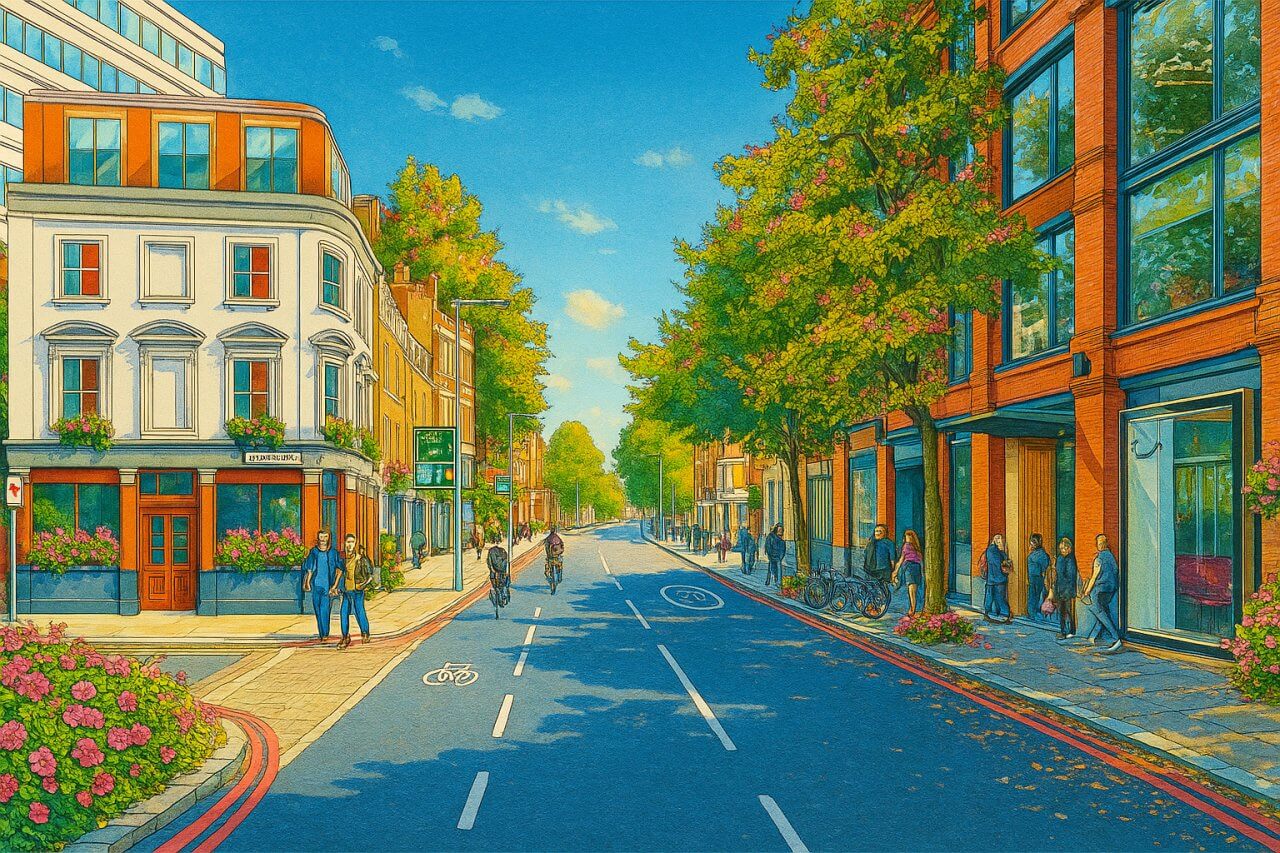
How Streets in London are Named
London is a city of many layers, and perhaps nowhere is this more evident than in its street names. From evocative historic references to royal tributes and modern-day personalities, the names of the city's roads and alleys tell stories that span centuries. But how are these names chosen, and who decides them?
The Authorities Behind Street Naming
In modern-day City of London and City of Westminster, as well as in all London boroughs, the responsibility for street naming lies with the local authority — typically the local council. Each council has a department (often under planning or highways) that considers new names and renaming proposals. These decisions are usually guided by a combination of policy, precedent, and community consultation.
Street naming is often triggered by new developments or the merging and realignment of roads. When developers propose a new street, they usually suggest several potential names, which are then reviewed and approved — or rejected — by the council. Councils may consult historical sources or local archives to ensure new names are not duplicates or misleading.
Can the Public Suggest Street Names?
Yes, members of the public can and do suggest street names. In some boroughs, local residents are actively encouraged to submit ideas, particularly when a street has yet to be named in a new development. While the final say remains with the council, public sentiment can strongly influence the outcome, especially when the proposal reflects local history or honours a widely respected figure.
For instance, names commemorating local war heroes, long-time community workers, or historic events often originate from grassroots suggestions.
Renaming Streets: Protest, Politics, and Change
Street renaming is more contentious than naming new roads. Changes often stir debate, especially if the original name has historical or sentimental value. That said, there are instances where popular demand or public protest has successfully led to renaming.
One notable example is Black Boy Lane in Tottenham, which was renamed to La Rose Lane in 2023 following community campaigns. The new name honours John La Rose, a prominent Black publisher and activist. Though the decision faced both support and backlash, it exemplifies how societal values and inclusivity can drive such changes1.
Honouring Individuals and Events
Many London streets have been renamed or newly created to honour influential individuals or significant events. For example:
- Mandela Way in Southwark honours Nelson Mandela and was established in the early 1990s.
- Abbey Road became globally recognised thanks to The Beatles, though the name predated their album. There have been discussions over commemorating the band with a nearby place name.
- Queen Elizabeth Olympic Park introduced a number of newly named streets such as Celebration Avenue and Victory Parade, reflecting the 2012 Games.
Streets with the Most and Least Name Changes
Most Renamed Street
Tooley Street, in Southwark, is often cited as one of the streets with a complicated naming history. Historically referred to as St Olave’s Street, the name evolved over time due to mispronunciation and linguistic simplification.
Longest Unchanged Name
Fleet Street, named after the River Fleet, has held its name since at least the 13th century. As one of the most iconic roads in central London, the name has survived numerous political, social, and urban changes over the centuries.
New Streets in the Historic Heart of London
Although most street creation now occurs in the outer boroughs, new streets do still appear within the City of London and City of Westminster — often within large-scale developments or as a result of urban regeneration.
- London Wall Place is a recently developed street near Moorgate, constructed atop a rebuilt portion of London Wall.
- Marsham Street North is a new addition that reflects redevelopment efforts around government buildings in Westminster.
- Hanover Square South emerged from Crossrail-related redesigns around the Elizabeth Line station entrances.
Streets Recently Lost to Development
While new names emerge, others disappear. In densely developed areas like Westminster and the City, older streets are sometimes absorbed, truncated, or erased to make way for larger buildings or infrastructure projects.
- Robin Hood Yard, a small lane near Liverpool Street, was largely absorbed into the redevelopment around Broadgate.
- Gardner’s Lane in Westminster has effectively vanished under the expansion of nearby offices and the Ministry of Justice.
- Little College Street, once a side lane near Westminster Abbey, disappeared during 20th-century construction work.
Fun Facts About London Street Names
Pudding Lane, the street where the Great Fire of London began in 1666, has retained its name for over 400 years. Contrary to what one might think, it’s not named after dessert — “pudding” referred to offal, and the lane was associated with butchers’ waste.
There’s also a Ha Ha Road in Greenwich — named after a type of sunken landscape feature called a "ha-ha", designed to keep grazing animals out of formal gardens without visible fences.
References
Quick Facts
- Street naming in London is handled by local councils, including the City of London and City of Westminster authorities.
- The public can suggest names, especially for new streets, but final approval lies with the council.
- Some streets have been renamed due to public pressure or to honour influential figures.
- Fleet Street is one of the oldest named streets, unchanged since the 1200s.
- Tooley Street has undergone multiple name changes over the centuries.
- Recent street additions include London Wall Place and Hanover Square South.
- Streets like Little College Street and Gardner’s Lane have recently been erased through development.
- Fun examples include Pudding Lane and Ha Ha Road, both with unusual name origins.
 Painting of How Streets in London are Named, London
Painting of How Streets in London are Named, London